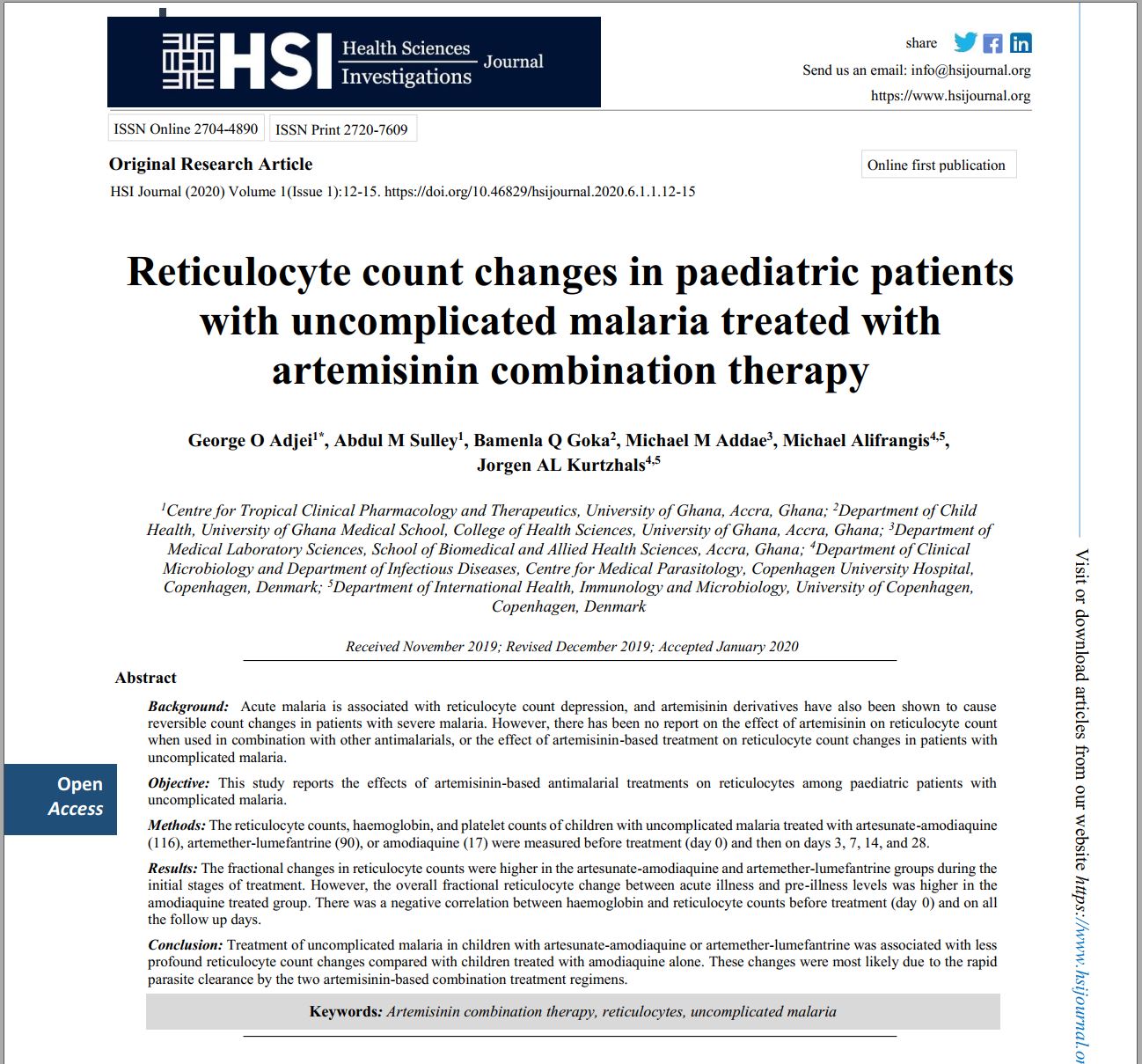Reticulocyte count changes in paediatric patients with uncomplicated malaria treated with artemisinin combination therapy
Reticulocyte count changes in paediatric patients with uncomplicated malaria treated with artemisinin combination therapy
Abstract
Background: Acute malaria is associated with reticulocyte count depression, and artemisinin derivatives have also been shown to cause reversible count changes in patients with severe malaria. However, there has been no report on the effect of artemisinin on reticulocyte count when used in combination with other antimalarials, or the effect of artemisinin-based treatment on reticulocyte count changes in patients with uncomplicated malaria.
Objective: This study reports the effects of artemisinin-based antimalarial treatments on reticulocytes among paediatric patients with uncomplicated malaria.
Methods: The reticulocyte counts, haemoglobin, and platelet counts of children with uncomplicated malaria treated with artesunate-amodiaquine (116), artemether-lumefantrine (90), or amodiaquine (17) were measured before treatment (day 0) and then on days 3, 7, 14, and 28.
Results: The fractional changes in reticulocyte counts were higher in the artesunate-amodiaquine and artemether-lumefantrine groups during the initial stages of treatment. However, the overall fractional reticulocyte change between acute illness and pre-illness levels was higher in the amodiaquine treated group. There was a negative correlation between haemoglobin and reticulocyte counts before treatment (day 0) and on all the follow up days.
Conclusion: Treatment of uncomplicated malaria in children with artesunate-amodiaquine or artemether-lumefantrine was associated with less profound reticulocyte count changes compared with children treated with amodiaquine alone. These changes were most likely due to the rapid parasite clearance by the two artemisinin-based combination treatment regimens.


